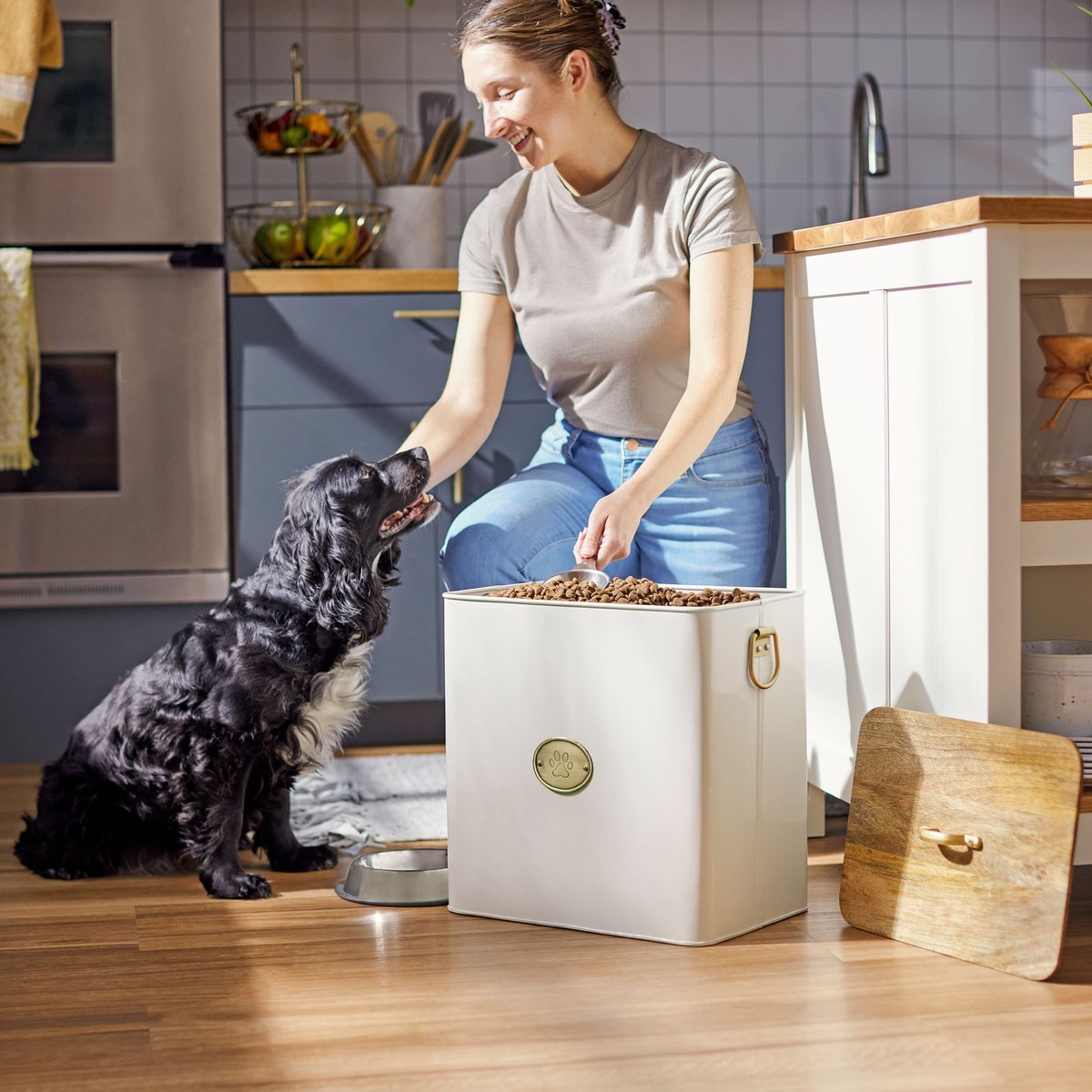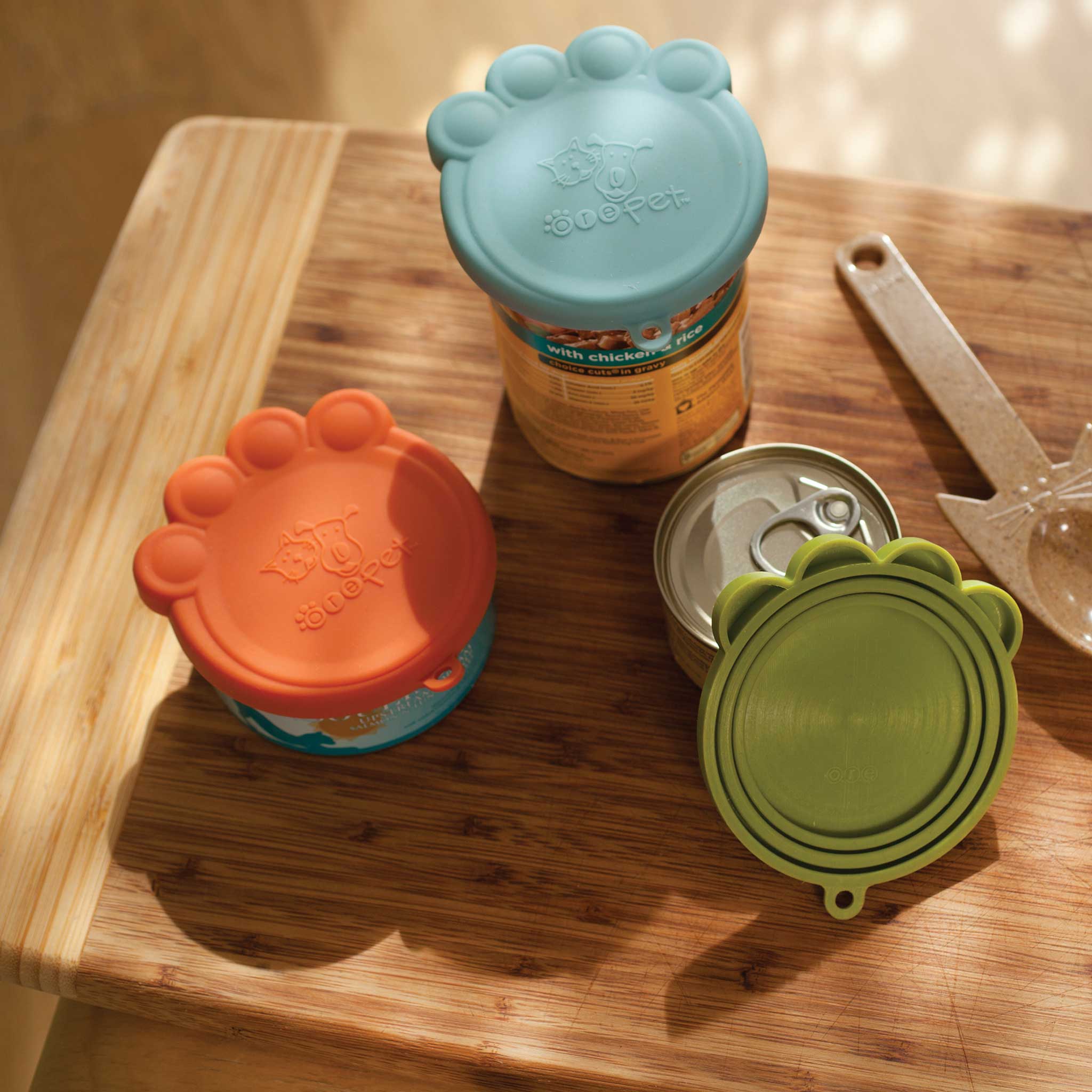Your furry family members rely on you to provide fresh, balanced meals every day to keep them healthy. Along with buying high-quality kibble and wet food for your growing pups, knowing how to store dog food properly is important to not only prevent spoilage but also to maintain its nutritional value.
In This Guide:
Why Is Proper Dog Food Storage So Important?
Properly storing your dog’s food helps maintain its nutritional value, prevents contamination, and keeps your pet safe from potential health risks. Here’s why proper storage is essential:
- Preserves freshness and nutrients: Exposure to air, heat, and moisture can degrade essential vitamins and fats.
- Prevents spoilage: Improper storage can lead to mold growth, rancidity, or bacterial contamination.
- Keeps pests away: Rodents, insects, and other pests can be attracted to improperly sealed food.
- Reduces food waste: Storing food correctly helps extend its shelf life.
- Keeps it tasty: Stale or spoiled food may become unappetizing to your pet.
How To Store Dry Dog Food

Chewy
Air, moisture, and high temperatures all affect kibble once a bag’s been opened. To help combat these forces, follow these tips for how to store dry dog food.
Seal Your Bag
The U.S. Food and Drug Administration (FDA) and dog food companies recommend sealing your dog food to minimize its exposure to air and moisture, which can contaminate your dog food with bacteria.
To seal your dog food bag, roll down the sides and use a bag clip to close the bag.
Use Airtight Dog Food Storage Containers
For protection against contaminants, use airtight plastic or stainless steel pet food containers, says Katy Nelson, DVM, a Chewy veterinarian. For easier cleaning, opt for stainless steel.
“Dry dog food is extruded and then sprayed with oils that start to break down and go rancid once the food is exposed to air, so kibble needs to be kept in an airtight container,” Dr. Nelson says.
Plastic pet food storage containers are available in several sizes, ranging from 3-pound storage containers to 50-pound storage containers.
Store the Bag Inside in an Airtight Container
To keep your pet food extra fresh, the Association of American Feed Control Officials (AAFCO) recommends storing the whole bag of dog food inside of the airtight dog food storage containers.
The bag provides an added barrier that helps seal in fats and oils to prevent them from becoming rancid, explains Dr. Nelson.
This also ensures access to the UPC code, lot number, “best by” date, and brand and manufacturer information, which is helpful for two reasons: You’ll need this info should a pet food recall occur, and it helps you avoid feeding expired food, according to the American Veterinary Medical Association (AVMA).
Keep the Container Clean
You may be tempted to simply top off your dog’s food storage container with a new bag of food as it starts to run low, but Dr. Nelson recommends against this. That’s because leftover food residue can accumulate oils and bacteria, leading to potential contamination and spoilage. And excess moisture can cause mold and mildew to grow on the food.
“You wouldn’t store leftover pasta in a plastic container and then reuse it to take your salad to work without washing it,” she says. “The oils from the kibble tend to make the container greasy, and you can then end up having rancid oil from the old bag contaminating the fresh food.”
Always thoroughly wash out the container between refills with hot, soapy water or white vinegar. Then, rinse and dry completely before refilling.
Store in a Cool, Dry Place
Store all unopened bags of kibble in a dry place where the temperature is less than 80 degrees Fahrenheit, according to the FDA.
Moisture can lead to mold, and high temperatures can speed up the degradation process, causing the nutrients within the food to break down.
Avoid storing your dry dog food in places where temperatures can exceed 100 degrees Fahrenheit, like a garage or shed.
Shop Related Products on Chewy
How To Store Wet Dog Food

Ore Pet
Once opened, it’s important to properly store wet dog food to prevent it from going bad.
Here’s how to keep your wet dog food as fresh as possible.
Seal It Tightly
Cover opened wet dog food with a can cover and/or plastic wrap to ensure freshness.
For fresh or frozen foods, Dr. Nelson recommends storing them according to package directions.
“Once opened, we like to wrap the open end of the tube in foil, held in place with a rubber band,” she says. “That can last up to one week in the fridge.”
Keep It in the Fridge
Unfinished canned food should be stored in a refrigerator to slow bacterial growth and prevent spoilage. Here, it can last for three to five days, Dr. Nelson says.
However, take a good look at it before feeding the opened dog food to your pup. If it’s watery or has changed in smell or texture, throw it out.
Pro Tip
How Long Does Dog Food Last?
Both wet and dry dog food have expiration dates, with the former being much shorter than the latter once opened.
How Long Dry Kibble Lasts
Bags of dry dog food are imprinted with a “best by” date to let you know how long you can keep it before it’s opened.
Dr. Nelson recommends using dry kibble within one month of opening if stored properly.
How Long Wet Food Lasts
Once opened, wet food should be used within three to five days. Unopened canned dog food can last months or even years.
Like dry food, wet dog food should be stored in a cool, dry place below 80 degrees Fahrenheit. Excess heat or moisture may cause the nutrients to break down.
How Can I Tell If My Dog’s Food Has Spoiled?
Throw out your dog food if:
- It’s past the expiration date.
- Dry kibble has been opened for longer than one month.
- Wet food has been open for longer than five days.
- Unopened cans have deep dents, air bubbles, or swelling.
- Wet food has separated.
- You see mold.
- There’s an odd/foul smell.
- Pests/insects are present.
- There’s excessive dust or crumbles.
- Excess moisture is present.
- Your dog refuses to eat it or becomes sick after eating it.
When in doubt, it’s always best to discard questionable food. Spoiled food can lead to digestive issues, food poisoning, or bacterial infections in dogs.
If your dog eats spoiled food, monitor them closely for the following signs of food poisoning:
Call your veterinarian or the Pet Poison Helpline at 855-764-7661 (a consultation fee applies) if your dog shows severe signs of food poisoning, including:
FAQs About Dog Food Storage
Q:Does dog food expire?
A:Yes, both wet and dry dog food have an expiration date. These are printed on the bag or can, and the dates refer to unopened food. Opened food has a shorter shelf life; one month for dry kibble and about three to five days for wet food.
Q:Can Purina ONE be stored in the refrigerator?
A:Purina ONE dry dog food doesn’t require refrigeration. Store it in a cool, dry place in its original bag and/or an airtight container.
For Purina ONE wet food, unopened cans can be kept at room temperature, while opened cans should be refrigerated and used within five days.
Q:What is the best dog food container?
A:The best dog food containers have an airtight seal. Either plastic or stainless steel is OK, but stainless steel is considered easier to clean.
Q:Can I freeze my dog’s food?
A:Yes, you can freeze wet and dry dog food to help preserve it longer. Make sure it’s in an airtight bag or container, and use it within six to nine months.
This content was medically reviewed by Teresa Manucy, DVM, Chewy veterinarian.
More on pet food storage and organization:
Share:













